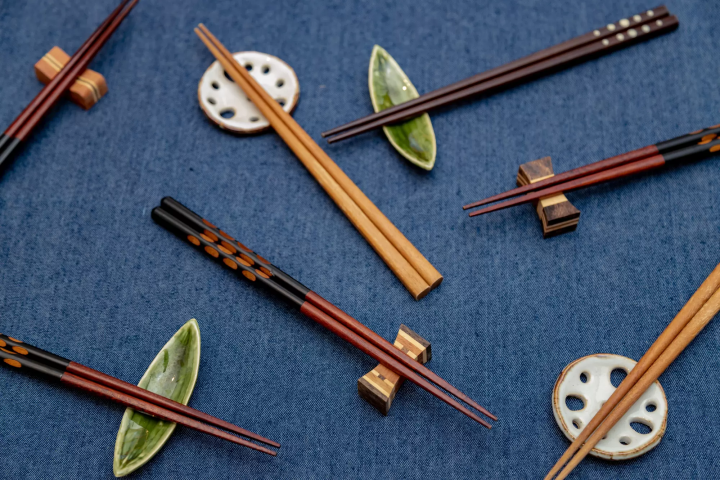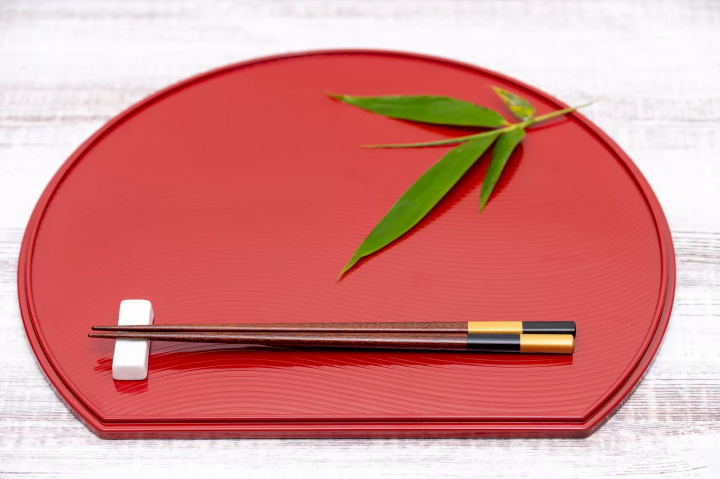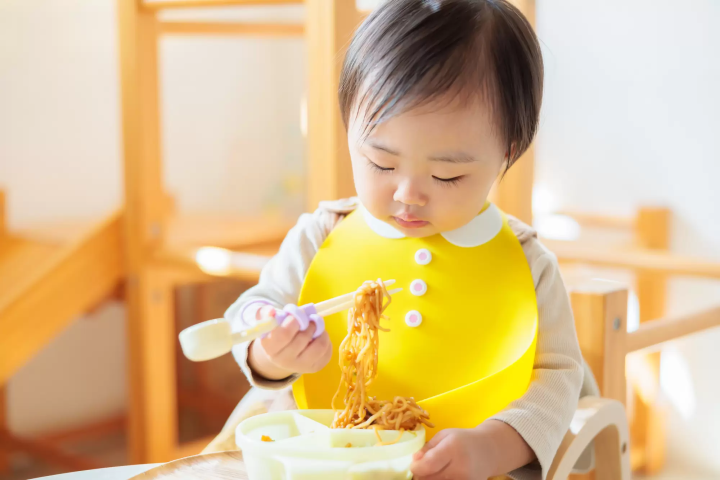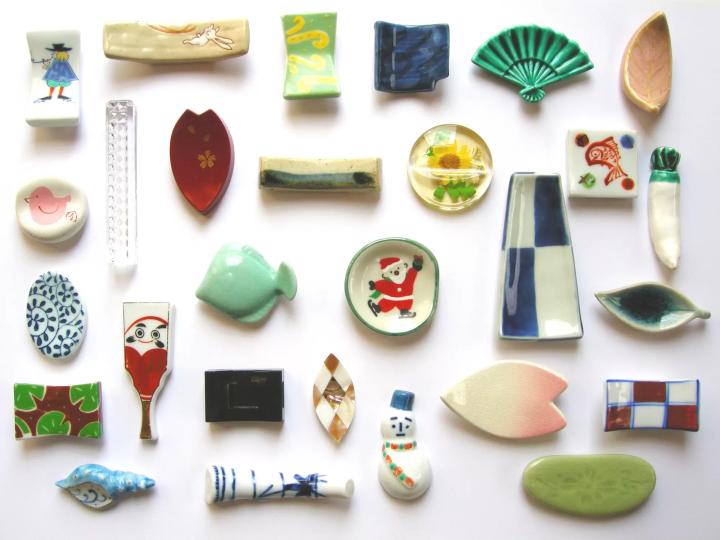How to Use Chopsticks and 5 Tips on Basic Manners

Learn about using chopsticks and what basic tips on good manners you should keep in mind when enjoying delicious Japanese food!

Photo by Pixta
Chopsticks, or "hashi" in Japanese, are not merely eating utensils in Japan; they are deeply ingrained in the culture and hold significant symbolic value. Learning how to use chopsticks with proficiency and observing proper etiquette is essential when dining in Japan. Here, we'll delve into the art of using chopsticks effectively and discuss five crucial tips on good basic manners to follow in Japanese dining etiquette.
The History of Chopsticks in Japan

Photo by Pixta
Chopsticks have a long and storied history in Japan, dating back over 1,000 years. Originally introduced from China, chopsticks, known as "ohashi" in Japanese, were initially reserved for the nobility and were crafted from precious materials such as ivory, bronze, and gold. However, it wasn't until the Kamakura period (1185–1333) that the use of chopsticks became more widespread among the general population. During this time, wooden chopsticks became the norm due to their accessibility and affordability.
Over the centuries, chopsticks evolved to become an integral part of Japanese dining culture, reflecting the country's emphasis on simplicity, elegance, and mindfulness in culinary practices. Today, chopsticks continue to symbolize tradition, etiquette, and respect for food in Japanese society, embodying a cultural heritage that is cherished and celebrated across generations.
Chopsticks in Modern Japan
While a variety of other eating utensils from other cultures have made their way into Japan, chopsticks are still the primary utensil that people in Japan use for eating their meals. Here we'll go over the kinds of chopsticks you see used in Japan nowadays.
Chopstick Length

Chopsticks in Japan are typically shorter than those used in other Asian countries like China or Korea. Japanese chopsticks are usually around 22 centimeters in length, making them easier to handle, especially for children.
Variety of Materials
Chopsticks in Japan are made from various materials, including wood, bamboo, plastic, and metal. Traditional wooden chopsticks are still widely used and appreciated for their natural feel and aesthetics, while disposable chopsticks made of bamboo or wood are commonly provided in restaurants.
Training Chopsticks

Photo by Pixta
Training chopsticks are a helpful tool for introducing children to the art of using chopsticks and helping them develop the necessary motor skills and coordination. By providing a fun and interactive way to learn, these special chopsticks make the process of mastering chopstick use more enjoyable for young learners.
Chopstick Rests

Photo by Pixta
In Japan, it's common to find chopstick rests called "hashioki" on dining tables. These small ceramic or wooden rests are used to place chopsticks on when not in use, preventing them from touching the table surface. Hashioki come in various shapes and designs, often reflecting seasonal motifs or traditional patterns.
How to Use Chopsticks
1. Holding the Chopsticks:
Begin by placing one chopstick between the base of your thumb and the tip of your ring finger.
Use your thumb to stabilize the chopstick against your middle finger.

2. Finding Balance and Control:
Practice holding the chopsticks with a relaxed grip to maintain balance and control. Use subtle movements of your fingers to adjust the position of the chopsticks when picking up food.
3. Picking Up Food:
Aim to grasp food delicately between the tips of the chopsticks. Avoid gripping food too tightly, as this may cause it to break or slip.
4. Proper Alignment:
Keep the tips of the chopsticks aligned when picking up food to ensure a secure grip. Maintain a parallel orientation between the chopsticks to facilitate easy handling.
5. Practice Patience and Persistence:
Mastering chopstick use takes time and practice. Be patient with yourself and persistently practice picking up different types of food to improve your skills.
5 Basic Manners to Follow in Japanese Dining Etiquette
From here, we'd like to introduce good manners when using chopsticks so that you won't leave any unpleasant or improper impressions on your dining companions. The following tips are points based on general manners when using chopsticks.
1. Don't Stab Food

Stabbing food using chopsticks like a fork is called "Sashibashi." It can be very tempting to resort to this method, especially when eating round, hard to grasp foods such as taro potatoes.
In Japan however, using chopsticks to stab food is viewed as unsightly and not classy. There are also times when stabbing something too hard may result in the food flying off your plate. So practice precise control and try not to stab your food!
2. Don't Set on Your Plate or Bowl

Making a bridge with your chopsticks, is called "Watashibashi." Placing your chopsticks horizontally across a plate or dish and can indicate to others that you're done eating. Doing this in the middle of a meal can be taken by those around you to mean that you think the food doesn't taste good. So only do this when you are finished eating.
3. Don't Pass Food Directly
When sharing food with others, use serving utensils or the blunt end of your chopsticks to transfer food to their plate. Passing food directly from a pair of chopsticks to another is reminiscent of a funeral ritual and should be avoided.
4. Don’t Lick Your Chopsticks
"Neburi" is the word used in the Kansai area for licking. "Neburibashi" means to lick chopsticks when it's not being used to pick up food or if there are food bits attached to it. Doing this is considered bad manners.
5. Don't Cross Chopsticks
Do not cross your chopsticks on your plate or bowl, as this symbolizes death and is considered very rude. Instead, place your chopsticks parallel to each other or rest them on a provided chopstick rest.
In Conclusion
Using chopsticks can take some practice and keeping etiquette in mind may be a challenge, but the more you use them and become good at it, the more you can enjoy Japanese cuisine the way it is meant to be eaten! Do your best to learn and show off your skills once you've become a master chopstick user!
Main image by Pixta
A Japanese girl who loves Japanese Rock music especially L'Arc-en-Ciel and VAMPS! L'Arc-en-Ciel、VAMPSをこよなく愛する20代です。全国どこでもライブを見に飛び回ってます。出身は山口県下関市です。 日本のロックミュージックと山口の知られていない魅力を中心に、様々な魅力を世界に発信していきたいと思います!






































![[Coupon Available] Attention Overseas Winter Sports Fans! Nagano's Sports Depot Has Evolved](https://resources.matcha-jp.com/resize/720x2000/2026/01/05-254819.webp)
![[2 hours from Tokyo ] 10 Quiet and Breathtaking Views of Mount Fuji in Yamanashi Hokuto City , Yamanashi - Part 2](https://resources.matcha-jp.com/resize/720x2000/2025/12/16-253037.webp)
